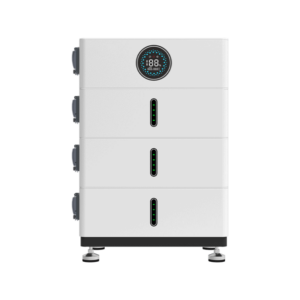Lithium-Ion Battery Lifespan: Factors and Maintenance Tips
Home » Lithium-Ion Battery Lifespan: Factors and Maintenance Tips
RECENT POSTS
Share:
- January 20, 2025
Table of Contents
Lithium-ion batteries have become indispensable in modern technology, powering everything from smartphones to electric vehicles and renewable energy systems. While their efficiency and energy density are impressive, understanding their lifespan is crucial for maximizing performance and ensuring sustainability. This article explores the factors influencing lithium-ion battery lifespan and provides actionable tips to extend it, helping users get the most out of their investment.
What Determines Lithium-Ion Battery Lifespan?
The lifespan of a lithium-ion battery is influenced by various factors, including usage patterns, environmental conditions, and the quality of the battery itself. Typically, these batteries last between 500 and 1,500 charge cycles, depending on how they are used and maintained.

Key Factors Affecting Lithium-Ion Battery Lifespan
- Charge and Discharge Cycles
- Each time a battery is charged and discharged, it goes through a cycle. Over time, the chemical reactions involved degrade the battery’s capacity.
- Partial charging and avoiding deep discharges can help reduce wear on the battery.
- Operating Temperature
- Extreme temperatures, both hot and cold, can significantly affect battery performance and longevity.
- Ideally, lithium-ion batteries should operate in a temperature range of 20–25°C (68–77°F).
- Depth of Discharge (DoD)
- The percentage of a battery’s capacity used before recharging impacts its lifespan. Batteries with a low DoD tend to last longer.
- Storage Conditions
- Storing batteries in a fully charged or fully discharged state can accelerate degradation.
- For long-term storage, maintaining a charge level of around 40–60% is recommended.
- Overcharging and Over-Discharging
- Overcharging a lithium-ion battery can cause overheating and reduce its lifespan. Similarly, letting the battery discharge completely can lead to irreversible damage.
Practical Tips to Extend Lithium-Ion Battery Lifespan
- Optimize Charging Habits
- Avoid frequent full charges; instead, aim for a charge range of 20–80%.
- Use a quality charger with built-in protections to prevent overcharging.
- Monitor Temperature
- Avoid exposing batteries to direct sunlight or freezing temperatures.
- Use battery-powered devices in well-ventilated environments to prevent overheating.
- Use Smart Charging Technology
- Many devices include smart charging systems that stop charging once the battery is full, reducing wear.
- Regular Maintenance
- Keep battery terminals clean and free from dust or corrosion.
- If possible, update the device’s firmware to improve battery management.
- Proper Storage Practices
- For seasonal devices like power tools or electric scooters, store batteries at room temperature with a partial charge.
Applications and Challenges
Lithium-ion batteries are widely used in various applications, including consumer electronics, renewable energy systems, and electric vehicles. However, challenges like declining capacity, safety concerns, and environmental impact highlight the importance of extending their lifespan.
By following best practices and understanding the science behind lithium-ion battery degradation, users can maximize their performance while minimizing waste and replacement costs.
The Future of Lithium-Ion Batteries
Research is continually improving lithium-ion battery technology, focusing on increasing cycle life, enhancing safety, and reducing environmental impact. Innovations such as solid-state batteries and advanced thermal management systems promise longer lifespans and greater efficiency.
Conclusion
The lifespan of a lithium-ion battery depends on various factors, including charge cycles, operating temperature, and maintenance habits. By understanding these aspects and adopting best practices, users can extend the life of their batteries, ensuring better performance and sustainability.
As technology advances, the durability of lithium-ion batteries will continue to improve, making them an even more valuable asset in the transition to a cleaner and more energy-efficient future.
0


